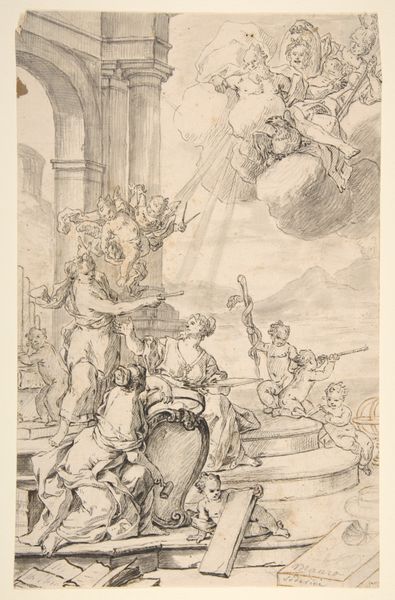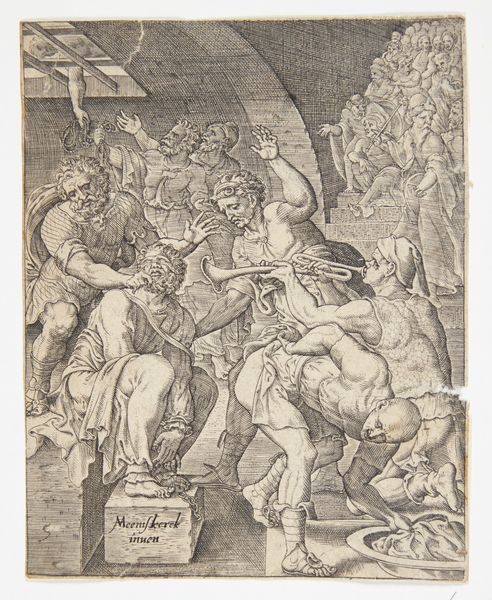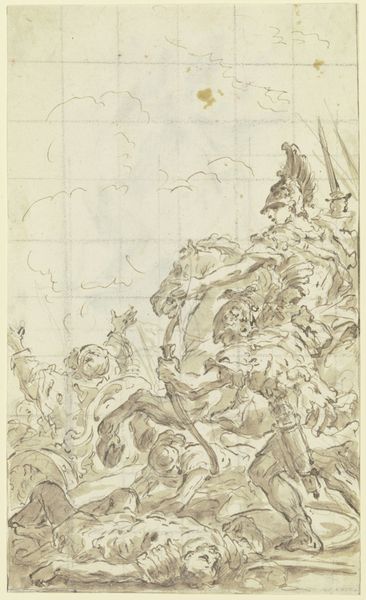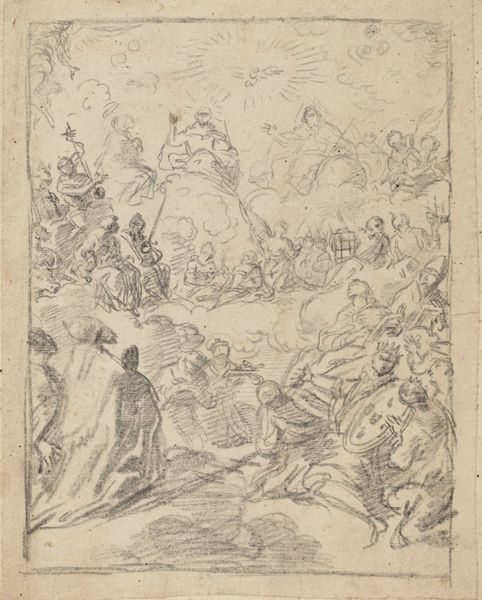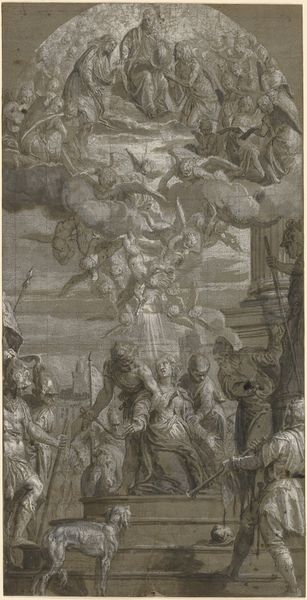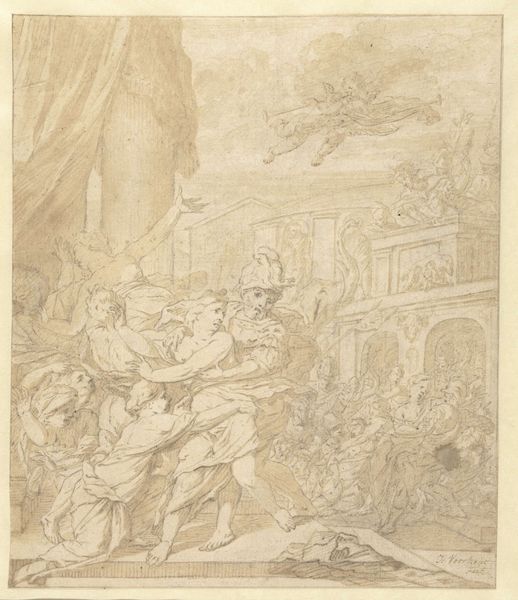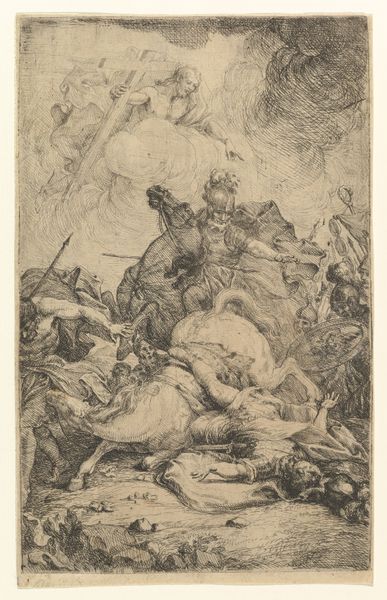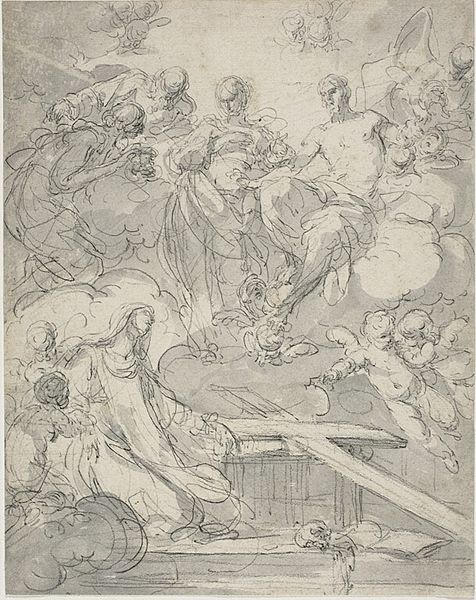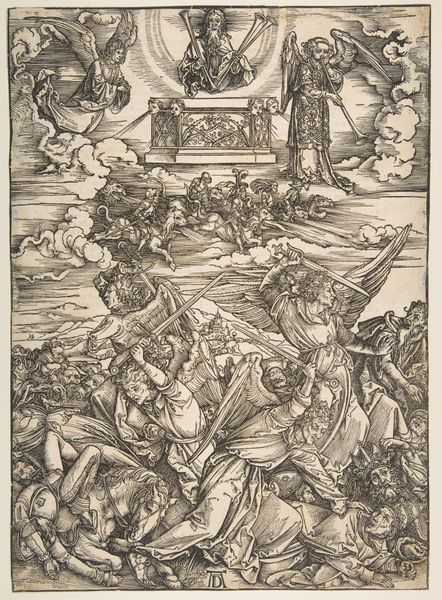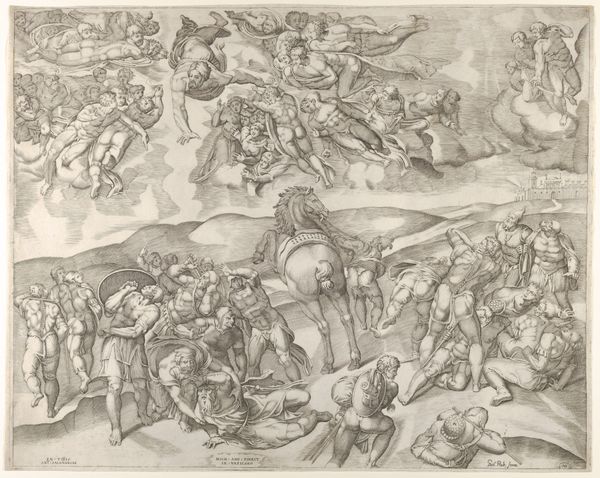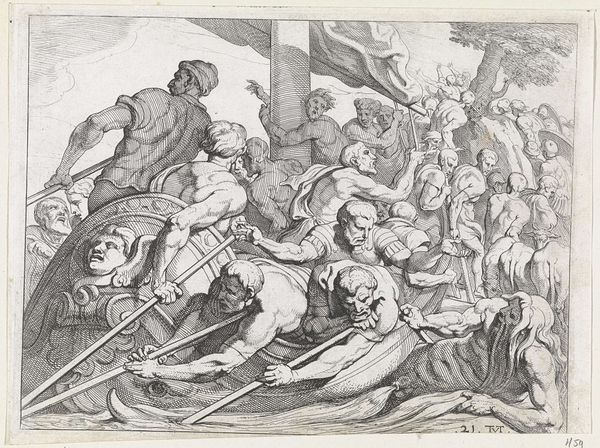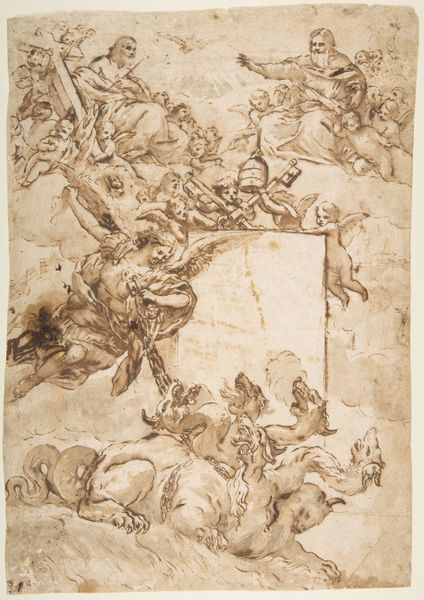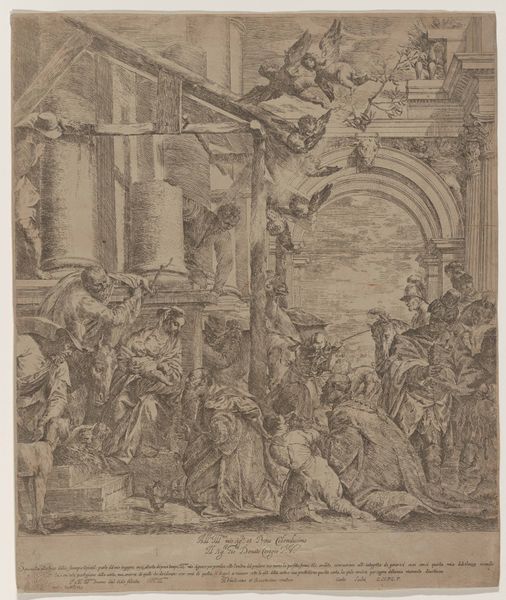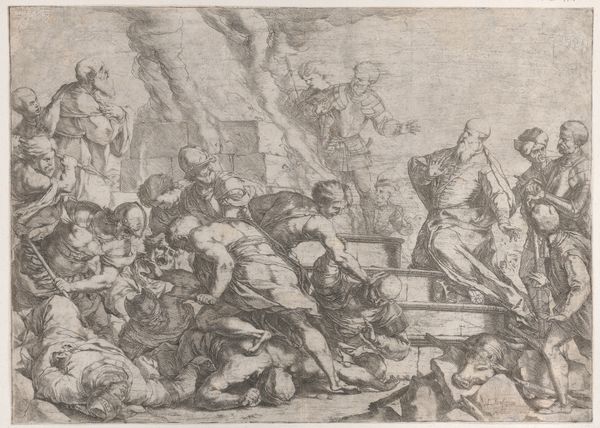
drawing, ink, pen
#
drawing
#
ink drawing
#
baroque
#
pen sketch
#
figuration
#
ink
#
pen
#
history-painting
Dimensions: sheet: 40.8 x 32.1 cm (16 1/16 x 12 5/8 in.), with both corners at bottom and small pieces along bottom and right margins replaced
Copyright: National Gallery of Art: CC0 1.0
Curator: Here we have Nicola Malinconico's "The Transport of the Ark of the Covenant," dating back to approximately 1690. It's rendered in pen and ink, a technique allowing for both delicate detail and dramatic flair. Editor: It strikes me immediately as chaotic yet controlled. The swirling figures, the dynamic lines… it's as though a storm has been captured on paper, all in muted grays. The tonal range achieves a striking visual energy. Curator: Indeed. Malinconico was working in a Naples still under Spanish rule, a city grappling with its own identity amid constant power struggles. Representations of biblical scenes were quite popular, frequently employed to reinforce moral messages or perhaps offer subtle political commentary. The story of the Ark, a potent symbol of God’s presence and power, would resonate strongly within this social climate. Editor: From a formal perspective, look at how Malinconico uses line weight to guide our eye. The Ark itself, central to the narrative, is sharply delineated, whereas the figures tumbling from the hillside behind are much more lightly sketched. It's a clever visual hierarchy. There’s also a noticeable contrast between the meticulously rendered figures at the bottom and the looser, almost gestural, handling of the landscape. Curator: I think that contrast highlights a tension central to Neapolitan Baroque art of that time: a desire for grand, dramatic spectacle, yet also a recognition of human fragility and societal anxieties. The figures closest to the Ark are the most realized, suggesting their direct engagement with the divine narrative and power. Meanwhile, the rest almost act as background. Editor: Consider the artist’s choices for conveying depth, too. Instead of sharp, linear perspective, Malinconico employs layered forms and varying ink densities to create an atmospheric recession into space. It enhances that sense of tumult. I also note how his fluid linework generates dynamism across the sheet. The scene nearly moves. Curator: So we see, through Malinconico's skillful draftsmanship and staging, how sacred narratives were marshaled to convey not just religious doctrine, but complex commentaries on power, society, and the very human condition during his time. Editor: I find this drawing particularly evocative for how it captures the narrative not just of transport but of the human response to the sacred. The fallibility, the commotion—it breathes humanity into the divine.
Comments
No comments
Be the first to comment and join the conversation on the ultimate creative platform.
